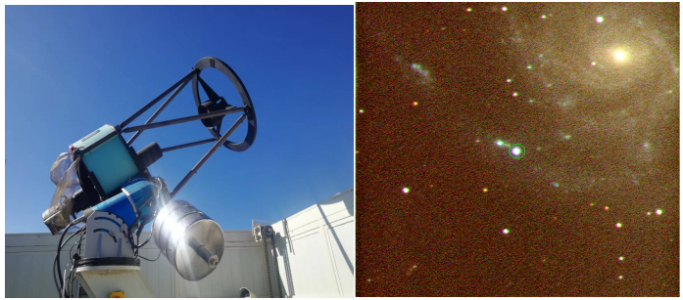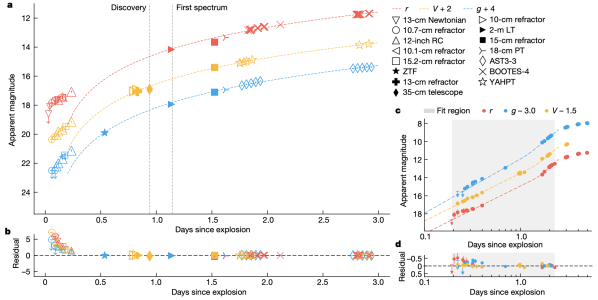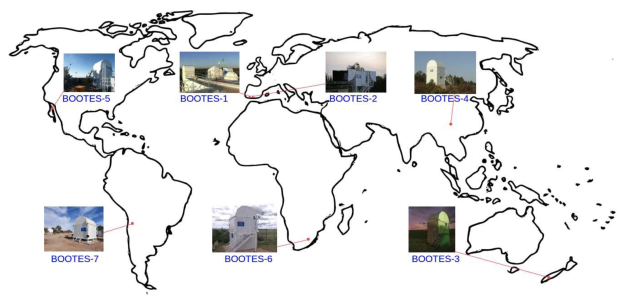The research team led by Professor WANG Xiaofeng from Tsinghua University published "A shock flash breaking out of a dusty red supergiant" online on December 14, 2023 in Nature. This study discovers the shock flash breaking out of a dusty red supergiant, overturning the expectations of traditional stellar death theories. Professor ZHANG Jujia and associate Professor XIONG Dingrong from Yunnan Observatories used the 60cm optical telescope BOOTES-4 of Lijiang Observatory to capture very early multi-bands flux variations that provided important information for the achievement.
After receiving the information of the supernova SN 2023ixf explosion, the researchers immediately arranged for the BOOTES-4 optical telescope (left panel in Figure 1) to monitor it afterwards, obtaining the multi-band optical image of the supernova (right panel in Figure 1), capturing the rapid evolution information of the explosion’s early stage. These data are an important part of the early light curve of the supernova SN 2023ixf (Figure 2), helping to reveal the entire process of the red supergiant from death, explosion to the formation of a supernova.

Figure 1. The left panel is the Lijiang Observatory BOOTES-4 optical telescope; the right panel is the gri three-color composite image on May 21, and the green circle is the position of the supernova SN 2023ixf. Image by XIONG.

Figure 2, Early light curve of supernova SN 2023ixf, and the "X" symbol is the data point observed by the BOOTES-4 telescope. Image by LI.
BOOTES-4 is a 60cm optical telescope jointly built by the Yunnan Observatories, the National Astronomical Observatories, and the Institute of Astrophysics of Andalusia (IAA) in Spain. It is located at the Lijiang Observatory and has rapid response capabilities. As China's first professional program-controlled autonomous observatory, the telescope is a fully automatic telescope system that can independently identify weather conditions and control the opening and closing of the dome. It is the fourth observation station of the global BOOTES network (Figure 3), which is the world's first global automatic telescope network.

Figure 3, Global automated telescope network BOOTES. Image by HU.
Thanks to all the staff at Lijiang Observatory for their long-term maintenance of the BOOTES-4 telescope. The Yunnan Observatories part of this work was funded by the National Key Research and Development Program, the National Natural Science Foundation of China, the China Manned Space Project, the Science and Technology Program of Yunnan Province, the "Light in the West" of the Chinese Academy of Sciences, and the Supernova International Center of Yunnan Key Laboratory.
Contact:
XIONG Dingrong
Yunnan Observatories, CAS
E-mail:xiongdingrong@ynao.ac.cn